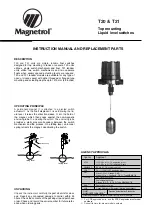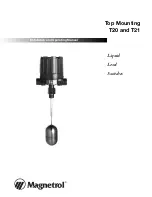
Spanning-Tree Operation
802.1s Multiple Spanning Tree Protocol (MSTP)
Operating Rules
■
All switches in a region must be configured with the same set of VLANs,
as well as the same MST configuration name and MST configuration
number.
■
Within a region, a VLAN can be allocated to either a single MSTI or to the
region’s IST instance.
■
All switches in a region must have the same VID-to-MST instance and VID-
to-IST instance assignments.
■
There is one root MST switch per configured MST instance.
■
Within any region, the root switch for the IST instance is also the root
switch for the region. Because boundary ports provide the VLAN connec
tivity between regions, all boundary ports on a region's root switch should
be configured as members of all static VLANs defined in the region.
■
There is one root switch for the Common and Internal Spanning Tree
(CIST). Note that the per-port
hello-time
parameter assignments on the
CIST root switch propagate to the ports on downstream switches in the
network and override the
hello-time
configured on the downstream switch
ports.
■
Where multiple MST regions exist in a network, there is only one active,
physical communication path between any two regions, or between an
MST region and an STP or RSTP switch. MSTP blocks any other physical
paths as long as the currently active path remains in service.
■
Within a network, an MST region appears as a virtual RSTP bridge to other
spanning tree entities (other MST regions, and any switches running
802.1D or 802.1w spanning-tree protocols).
■
Within an MSTI, there is one spanning tree (one physical, communication
path) between any two nodes. That is, within an MSTI, there is one
instance of spanning tree, regardless of how many VLANs belong to the
MSTI. Within an IST instance, there is also one spanning tree across all
VLANs belonging to the IST instance.
■
An MSTI comprises a unique set of VLANs and forms a single spanning-
tree instance within the region to which it belongs.
■
Communication between MST regions uses a single spanning tree.
■
If a port on a switch configured for MSTP receives a legacy (STP/802.1D
or RSTP/802.1w) BPDU, it automatically operates as a legacy port. In this
case, the MSTP switch interoperates with the connected STP or RSTP
switch as a separate MST region.
■
Within an MST region, there is one logical forwarding topology per
instance, and each instance comprises a unique set of VLANs. Where
multiple paths exist between a pair of nodes using VLANs belonging to
5-54
Summary of Contents for 2610
Page 1: ...Advanced Traffic Management Guide 2610 2610 PWR ProCurve Switches R 11 XX www procurve com ...
Page 2: ......
Page 14: ...xii ...
Page 20: ...Product Documentation xviii ...
Page 84: ...GVRP Introduction 3 18 ...
Page 190: ...Spanning Tree Operation 802 1s Multiple Spanning Tree Protocol MSTP 5 82 ...
Page 306: ...IP Routing Features UDP Broadcast Forwarding 7 48 ...
Page 354: ...ProCurve Stack Management Configuring Stack Management 8 48 ...
Page 363: ......
















































